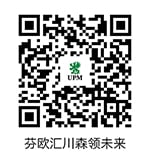The circular bioeconomy enables us to address the challenges of both climate change and resource scarcity. To make the circular bioeconomy a reality, our goal is to minimise waste, maximise the reuse of materials and waste streams, and create added value through innovations and smart solutions.
Forests are at the heart of circularity at UPM. They are the source for our renewable, bio-based products and materials. We are committed to climate-positive forestry and making a positive impact on biodiversity. We ensure that our forests always grow more than they are used.
Up to 80% of products’ environmental impacts are defined at the design phase. Our Sustainable Product Design concept enables us to develop recyclable products from renewable materials. Collaboration, especially during the design phase, is important to us. Together with customers and partners, we innovate and commercialise new, resource-efficient solutions to promote sustainability and responsible use of renewable and recyclable materials and make the circular bioeconomy a reality.
We consider our products’ environmental and social impacts throughout their lifecycle from material selection to production, use, reuse and recycling. Many of our products are made of residues, side streams and recovered materials. Some examples of our side streams are ash, crude tall oil, organic production residues and lime.
We aim to become a Zero Solid Process Waste to Landfill company globally by 2030. This means that we will not deposit any process waste at landfill sites, and no process waste will be incinerated without energy recovery. We are also working to use only recycled nutrients in our own effluent treatment plants by 2030.
As forest and paper industry wastewaters are poor in nutrients, we need to add nitrogen and phosphorus to the biological stage of the wastewater treatment to make the bacteria work. The use of recycled nutrients not only reduces the overall nutrient load on waterways but also decreases the need for the energy-intensive production of nitrogen and the use of phosphorus, which is a depleting natural resource.
